COOK OUT NOT SMOKE OUT
VENTILATION
“Courage is fire, and bullying is smoke”
– Benjamin Disraeli
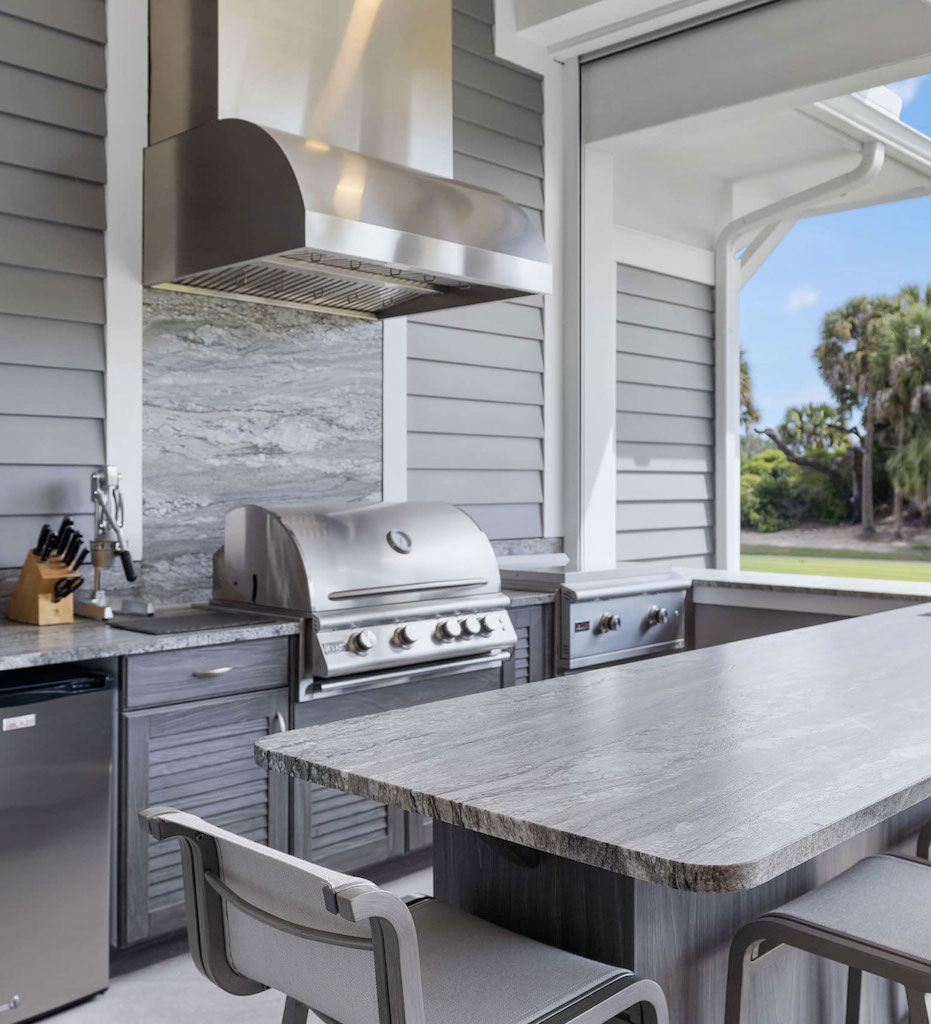
Maybe….Probably…Yes
Do you need it?
Florida building codes require ventilation when you build a grill into a permanent structure that is under a roof. But for more practical purposes no one likes to show up at a party only to have the room be filled with smoke and not be able to breathe. Well no one we know, but you may have weird friends who do.
Not Just Stainless Steel
Decorative Hoods
Most outdoor hoods are going to be rather utilitarian in their design and function, however there are a few manufacturers that do provide some fancier options
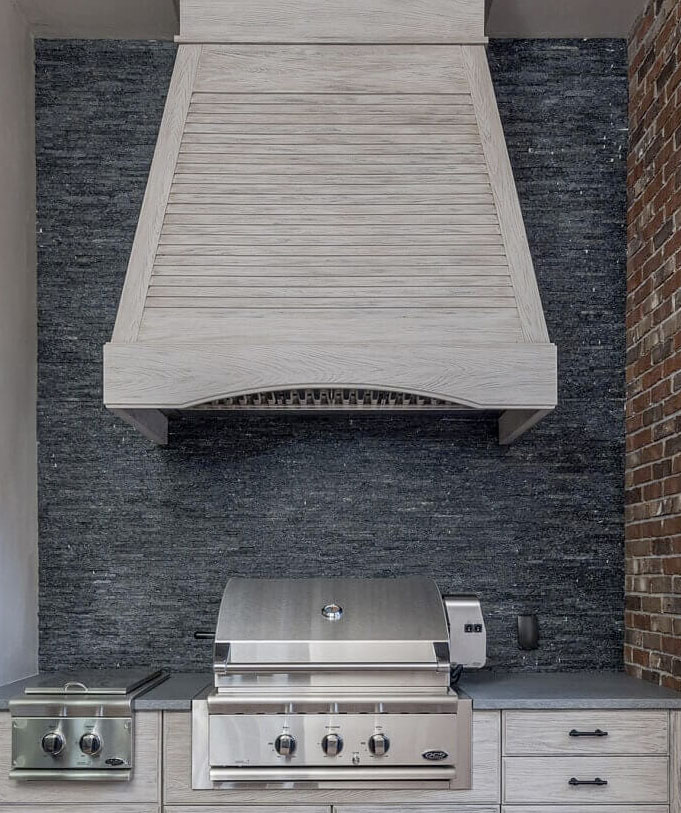
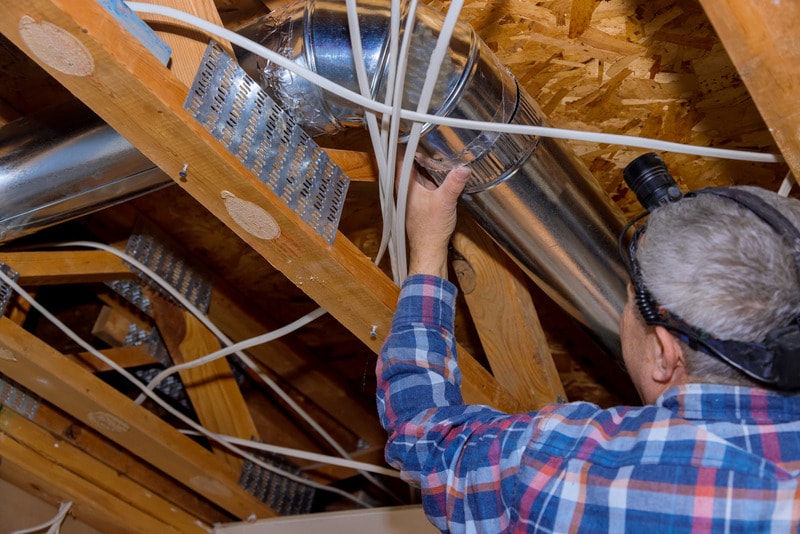
People Either Love It or Love It
Ductwork
Outdoor ventilation typically has powerful 1500 cfm blowers, but if your ductwork is the appropriate size (10″ or more) then you’re decreasing the power of the blower. You also want the duct run to be as short as possible and with as few turns as possible. A straight run is the best!
Power…More Power!
Blower Speed
A grill generates a lot of heat and smoke. A powerful blower (1500 cfm or more) will be required to be effective. Vents are equipped with an internal blower, but some vents have options for a roof mounted remote blower.
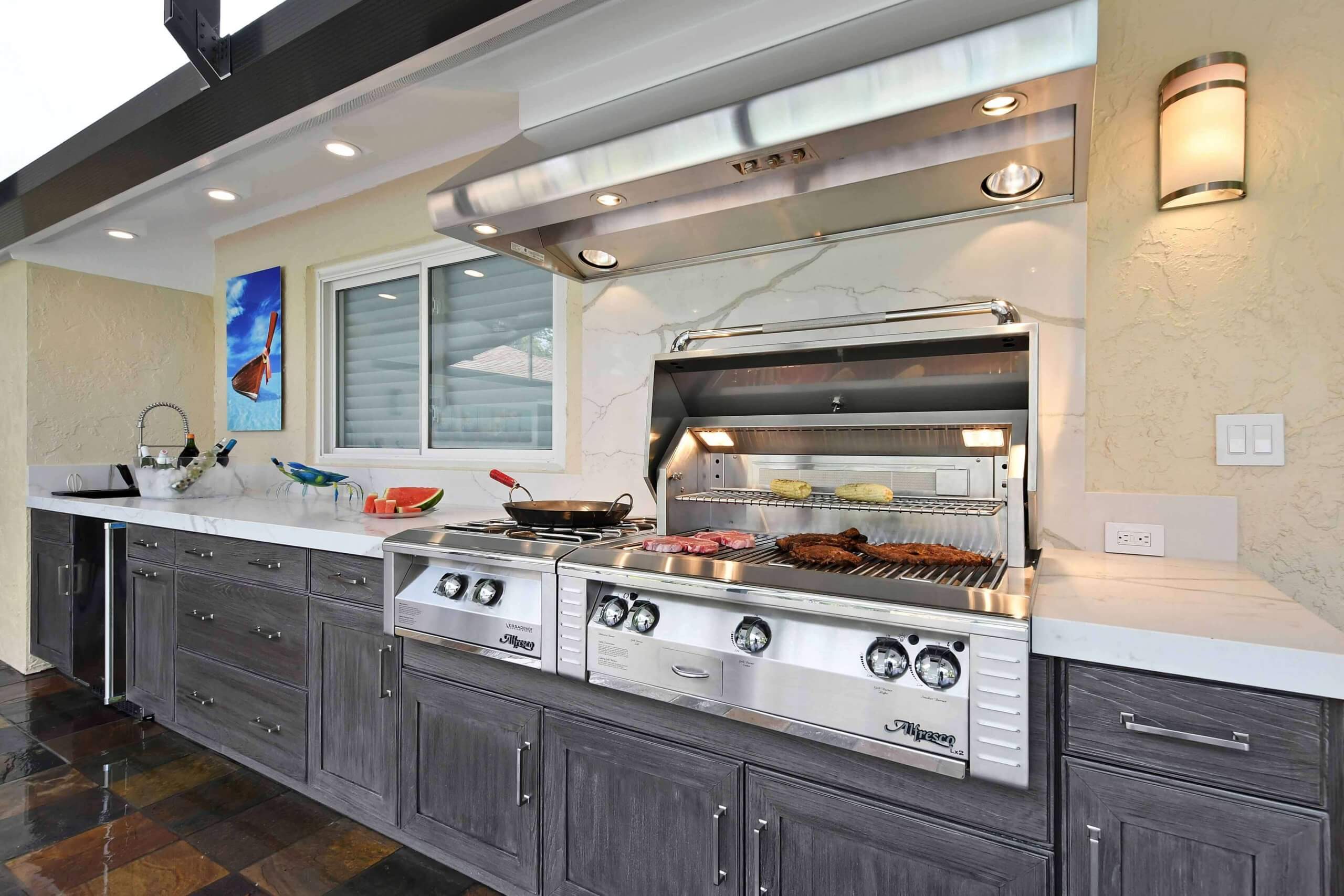
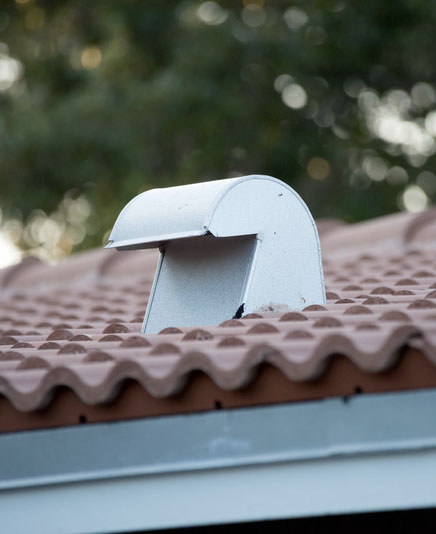
People Either Love It or Love It
Ductwork
Outdoor ventilation typically has powerful 1500 cfm blowers, but if your ductwork is the appropriate size (10″ or more) then you’re decreasing the power of the blower. You also want the duct run to be as short as possible and with as few turns as possible. A straight run is the best!
THE JOURNEY STARTS WITH A SINGLE STEP
Contact Us
Whether you’re looking for a unique custom outdoor kitchen, designed and built to match your aspirations or a simple and straight forward set up, it all starts with a conversation. Learn more by scheduling a personal consultation with one of our design experts.
Outdoor Ventilation
Ventilation is the best way to keep your outdoor kitchen clean and safe. You don’t want your guests to constantly cough from all the smoke. And without ventilation, the grease from the grill can really damage the walls of your outdoor kitchen. The most common way to keep your outdoor kitchen ventilated is by installing a ventilation hood. Some people call these “grill vents,” “grill hoods,” or “outdoor ranges.”
There are many different options for ventilation hoods. You can work with a professional designer to pick a hood that fits your style and aesthetic. Why do you need outdoor ventilation? Since it’s an outdoor kitchen, shouldn’t the smoke just blow away? Let’s talk about why outdoor vents are necessary for your outdoor kitchen.
Why Do I Need Outdoor Ventilation?
When you have an outdoor range, the grease, smoke, and harmful gasses from the grill are sucked up into the ventilation hood and diffused. This helps keep the smoke out of your guests’ lungs, and funnel it out of the way. It keeps your outdoor kitchen from getting smoky. Also, when you use the grill, the food produces natural grease. This drips onto the grill and burns, which puts tiny grease particles into the smoke. If you don’t have a ducted outdoor grill hood, the smoke will just settle on the grill, countertops, and walls. That means you’ll get grease particles everywhere. Over time, the grease and smoke can do a lot of damage to your outdoor kitchen, especially if it gets on the walls. Any time you have an outdoor kitchen with more than one wall, we highly recommend installing a ducted outdoor hood. Also, depending on the local building regulations, you may be required to install a ventilation system. The last thing you want to do is create a health and safety hazard for your guests and family. Ventilation is a vital part of every outdoor kitchen.
Outdoor Cooking Vent Hood Options
So you’re required to install a ventilation system. What are some of the options available to you? There are a handful of grill hood styles, as well as some other very important questions to consider, like whether or not to include a duct system. Of course, the type of vent that you choose depends on a lot of factors, including the layout of your outdoor kitchen, the type of grill you have, and your budget. Be sure to talk with a professional about which option is the best fit for you.
Island Vent
The first option for a vent shape is often called an “Island vent.” Island vents are designed to cover a kitchen island. They hang down from the ceiling, without being attached to the surrounding walls. This hood style has a skinny duct, leading into the ceiling. It flares out at the base, in order to catch the most smoke and grease possible. These hoods can go over a grill, or over the stove burners in your outdoor kitchen. If your grill is in a covered area, and it’s an island, the island vent might be a good choice for you.
Wall-Mounted Vent
The second grill hood style is a wall mounted vent. The wall-mounted vent is installed directly into the wall, hanging over the grill. It helps keep your grill covered, as well as providing great ventilation. This style is a good fit if you want an outdoor kitchen that is approachable, where you can just walk up to the grill. However, beware that when you install this hood style, you need to make sure that the hood is fully connected to the wall. You don’t want any smoke to escape behind the hood. If your grill is installed against a single wall, the wall-mounted vent might be a good fit for you.
Under Cabinet Vent
While this style is common with indoor kitchens, having upper cabinets in an outdoor kitchen is fairly rare, let alone cabinets mounted directly over the grill. On the indoor versions the blowers in these units are generally under powered for outdoor use so they can’t be adapted very well for outdoor use. Given the amount of heat and smoke that grills generate we recommend at least 1200 cfm if not significantly more and at that point you’re basically dealing with a standard wall mounted hood. Additionally under cabinet hoods are generally not outdoor rated either.
Downdraft Ventilation
Down draft is a style of ventilation that is also fairly popular in indoor kitchens but is not well suited to outdoor applications. The vent is mounted behind the grill inside the base cabinet and rises up to capture the heat and smoke. The main issue is going to be the positioning of the grill’s hood when open, it is going to block the downdraft and completely prevent the smoke from being captured by the downdraft. Downdraft vents also have to fight the laws of physics to pull hot air back horizontally when it wants to go straight up and given the power and heat generated from your average grill it is simply too much for these units to handle even if the hood wasn’t in the way. Bottom line is stay away from downdraft ventilation in outdoor applications.
Duct vs. No Duct
Now that we’ve gone over the four main styles of ventilation for your outdoor kitchen, let’s talk about the duct system. Our team at Outdoor Kitchen Guy always recommends installing a duct system for your grill vent with the proper diameter to support the strength of the blower, generally that’s going to be 10 or 12 inches in diameter. Grills create an immense amount of heat and smoke and if you aren’t planning on having the proper sized duct work to support the ventilation unit, then honestly there’s not much point to having ventilation, the smoke and heat need to be removed from your patio area!
If you really want to keep your outdoor kitchen in top shape, it’s important to include a duct so the smoke and gasses can escape, we’ve seen a lot of examples where the walls behind the grill are blackened over time with smoke and soot from grills. Proper outdoor ventilation is the main way to prevent this from happening.
We work with a lot of luxury outdoor kitchens in Orlando, FL. Our top priorities are durability and comfort. That’s why we recommend installing a duct for your grill hood. Of course, it’s best to have this installed by a professional, at the same time as you install the ventilation hood. If you’re in the Orlando area, and you’re looking to build an outdoor kitchen, we’d be happy to talk with you about your project. You can give us a call at (407) 330-6860.
What is CFM?
Another consideration for your outdoor grill hood is the CFM. CFM stands for cubic feet per minute, and it’s a way to measure how efficient your vents are. When a hood has a high CFM, that means it is very quick at removing smoke from the room. At the bare minimum, we recommend hoods with at least 1,200 CFM. After the minimum of 1,200 CFM, we use the rule of 1+ CFM for every BTU in the grill.
And really, the more CFM, the better! With better ventilation, you’ll keep your outdoor kitchen safe, healthy, and clean. There is no maximum when it comes to the CFM.
What Size Ventilation Hood Should I Buy?
We always recommend installing a ventilation hood that’s slightly bigger than your grill. One rule of thumb is to make sure the ventilation hood is six inches bigger than the grill, on all sides. That means if your grill is 30” wide, your hood should be 36”. If your grill is 36”, you should install a 45” hood. However, technically speaking, anything that is big enough to cover the grill will work.
The reason you want a hood that is larger than your grill is physics. The heat and smoke naturally expand as it gets further away from the grilling surface and you want to maximize the capture area your hood provides so you don’t have smoke escaping the hood’s grasp and making your outdoor living area uninhabitable!
Are You Looking To Build Your Dream Outdoor Kitchen?
We’re a locally owned and operated business in Orlando, Florida, and we specialize in building luxury kitchens. Are you looking for a team of professionals to install your outdoor kitchen? Reach out to us and schedule a consultation today! You can reach us by phone, at (407) 330-6860, or by filling out the contact form on our website. We look forward to working with you.
